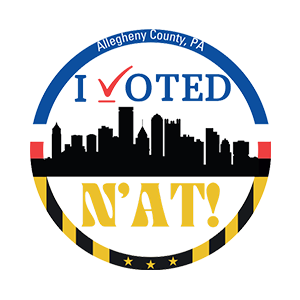50 years later, a neighborhood team remembers

n a hot summer day in 1974, a dozen or so teenage boys gather in a small park at the bottom of Iroquois Drive in Mt. Lebanon. They begin shooting hoops on the basketball court there, trash talking good-naturedly as they play. They all come from the surrounding streets: Seminole, Longuevue, Nakoma, Iroquois, Allendale. One thing they have in common: they all consider this place THEIR park.
Cut to 50 years later, same basketball court. Ten of those same boys, now men in their 60s, gather once again to shoot baskets and catch up with each other. Many of them live far from their old neighborhood, in Kansas, Texas, Florida, Manhattan. They have wives and families, kids in college and grandchildren.
But they still consider themselves the team that they once were: the Seminole Sixers. They once ruled the court in Iroquois Park, wearing matching jerseys, playing other neighborhood teams and hanging out in the park from morning to night on long summer days.
Now they’re grateful for the long-standing friendship of their former teammates, who have kept in touch for five decades and recently held a 50-year reunion over a June weekend in Mt. Lebanon.
Much of their closeness is due to the efforts of Pete Sielski, who now lives in Bethel Park, but grew up with his brother Paul, another team member, on Seminole Drive. Pete organized the recent reunion, as well as two earlier ones in 1988 and in 2000.
“I’ve kept up with almost all the guys and was even best man at two of their weddings,” said Pete Sielski. “Last year I had a heart attack and decided we needed another reunion to get all the guys together before something bad happens.”
The men, who range in age from 62 to 70, met for drinks and dinner at The Saloon on a Friday night, followed by a pick-up basketball game in Iroquois Park on Saturday at 4 p.m., and dinner that evening at T.G.I. Friday’s. Several of them compared their adolescence in the neighborhood to the television show The Wonder Years, and the movie The Sandlot.
“Coming back is so special,” said Peter Scannell, a former Longuevue Drive resident who now resides in Florida and Manhattan.
“These are my best friends growing up. Some I’ve seen more often, some I haven’t seen since I stopped playing basketball almost 50 years ago.”
“No one knows whose idea it was to call ourselves the Seminole Sixers,” said Paul Sielski, who now lives in Waynesburg.
Although the first members of the group graduated from Mt. Lebanon High School in 1976, they still gathered to play summer league ball through 1978. The youngest member, Scott Nichol, who graduated from high school in 1979 and now lives in the Philadelphia area, has not seen most of the other members since then. He was thrilled to be at the reunion.
“I didn’t cross paths with these guys before, because we were in different graduating classes,” he said. “And then somebody figured it out and found me! Truly amazing.”
In contrast, Alvin Faett of Houston, Texas, sees another team member, Raymond Scannell, Peter’s brother, several times a year. “The rest of the guys, maybe once a year when I come to Pittsburgh, we’ll get together at a local bar,” he reported.
Other attendees were Tommy Seals of Wichita, Kansas, and three who still live in Mt. Lebanon: Mike Hohman, Kingsberry Circle; Jimmy Wollett, Academy Avenue; and Norman Faett (Alvin’s brother), Shady Lane. Alex Eckman, who lives in Florida, and Paul Sutton, of Greentree, were unable to attend.
According to Pete Sielski, the park was a huge factor in bringing the gang together. “Kaufmann’s Department Store, now the Galleria, donated the land for that park; it was originally called Kaufmann’s Park,” he said. “Mt. Lebanon put in the courts, merry-go-round, slide, and swings. We had an open field that we used for softball, football and golf until 1975, when Kaufmann’s put in their parking garage. That really forced us into playing only basketball. We even played in the winter.”
Pete Sielski confided that if he were to write a memoir, it would be called “Kaufmann’s Hill.” “All the kids hung around there, boys, girls—it was the baby boomers. All we did all summer was play sports. We were just there every day. That’s just the kind of neighborhood we had.”
Wollett agreed. “Every day was like the Fourth of July.”





